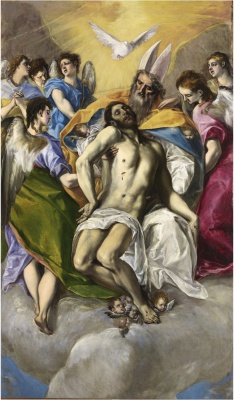Descripción de la Exposición
Espace Meyer Zafra is pleased to present a group exhibition entitled “Winter Show”, gathering the eight artists: Marina Apollonio, César Andrade, Carmelo Arden-Quin, Narciso Debourg, Manuel Mérida, César Paternosto, Marine Provost and Léopoldine Roux.
Marina Apollonio is one of the most important figure in the kinetic world, showcasing an extensive portfolio of works that have been exhibited in the world’s greatest collections such as the Guggenheim Collection in Venice, the Hermes Foundation, the Museum of Modern Art in Torino, the New Museum in New York, the MACBA of Buenos Aires and the Villa Datris Foundation in France. In addition, her participation in group exhibitions such as Dynamo at the Grand Palais in Paris, or more recently Vertigo at Mumok in Austria, and at Kunstmuseum of Stuttgart in Germany, can attest to the fact that she is generating a lot of interest from the public.
César Andrade studied at the School of Visual Arts in Barquisimeto, Venezuela. After undertaking his functions as a professor of visual arts in Acarigua, he went to visit Europe in 1968 and finally moved to Paris. The following year he showcased his first “linigramas” as part of what he considered being the first in-depth study on the line. Though his work has primarily been focused on the use of nails aligned so as to capture the light and reinforce the color during the spectator’s displacement “linigramas” work on paper come to disturb the eye in the same precise alignment by drawing lines by felt tip pen
Carmelo Arden Quin is an Uruguayan artist. Arden Quin’s primary focuses were painting and poetry. From a young age, Arden Quin was an ambitious and idealistic artist. Today, Arden Quin is mostly recognized for his co-founding of the Madí movement, which began in Argentina but ultimately became an international movement. Arden Quin’s commitment to invention, rather than replication or representation, drove his relentless pursuit of new forms and ideas.
In 1951, influenced by Constructivism, Narciso Debourg began experimenting with what would become his main area of focus for the rest of his life: the repetition of small geometric forms, flat at first, and later cubical and cylindrical, regularly placed on the support of the work and cut diagonally to produce rhythmical alterations of light. Some of the works were monochromes and the effects were very subtle and, in others, the color stood out from the background of the small surfaces, where cuts had been made,producing dynamic undulations.
Manuel Merida seeks to avoid offering a still and unique vision by playing with the variations of the colorful matter (pigments, sand, coal powder, wood particles and painted metal) present in his monochromes. His works are always mobile and their forms, dimensions and colors are always different. From 1969 through 1971, he worked with Carlos Cruz Diez in Paris. He then settled down in Paris in 1983 and as a cinematographer decorator, he also worked as a scenographer for the theater and realized numerous works in advertising for brands such as: Christian Dior, Guerlain, Cartier, Chanel, American Express, Madame Figaro, Anick Goutal. Manuel Merida comes from the second generation of South American kinetic artists. His work is also present in private collections located in the United States, France, Spain, Great Britain, Switzerland.
In 1977, Paternosto began to travel to Bolivia and Peru to study the archaeological sites Tiwa naku, Ollantaytambo, and Machu Picchu. These trips marked an important turning point in his work sparking new formal explorations in shape, composition, and color. By rooting his art in American autochthonous traditions rather than in the modern European model, Paternos created a new and original type of abstraction based on the centuries-old woven textiles and sculptural stones of the Inca. Paintings by Paternosto are found in various prestigious collections, including the Museum of Modern Art, New York; the Solomon R. Guggenheim Museum, New York; the Museum of Fine Arts, Boston; the Museo Reina Sofia, Madrid; the Kunstmuseum, Bern, Switzerland; and the Städtisches Museum Abteiberg, Mönchenglad bach, Germany, amongst others.
“My artistic practice is closely linked to the perception of everyday life, to the influence our environment has on us and who we are. The materials, the tools that serve me are the ones which are available in my surroundings. The objects that I use have systematically grown out of their primary function. They are considered for their materiality and the potential it has to offer, at the service of plastic thinking. One thing can become another, it’s all about perspective. “ (Words by Marine Provost)
Born in 1979 in Lyon, Léopoldine Roux studied at EESAB in Rennes before moving to Brussels to finish her training at ENSAV La Cambre. The setting in motion of color, the exploration of its range of possibilities in the form of flow, crust or enveloping skin refocuses Roux’s practice on a gestural issue. It encompasses the fields of painting, sculpture and performance at the same time. Between New York and Madagascar, from Paris to Berlin via Brussels and Knokke, from Rome to Ho Chi Minh City, stopping in Istanbul, Algiers, Beirut with stops in Pompeï and Athens... the Pandemic Gardens Series were carried out in Brussels during the eight weeks of Covid 19 lock down by the artist Léopoldine Roux.

Exposición. 18 feb de 2025 - 15 jun de 2025 / Museo Nacional del Prado / Madrid, España

Formación. 01 oct de 2024 - 04 abr de 2025 / PHotoEspaña / Madrid, España